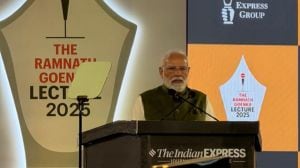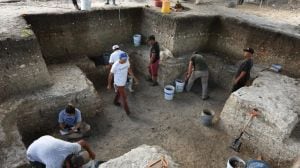No roads to the heart
Few are aware that Munnar's famed Eravikulam National Park was originally the private hunting preserve of the erstwhile British tea plante...

Few are aware that Munnar’s famed Eravikulam National Park was originally the private hunting preserve of the erstwhile British tea planters of Munnar — a sprawling 105 sq km sanctuary, 7,000 feet above the sea level, zealously guarded against poachers by dedicated Muduvan tribals who also doubled as game trackers for their British masters. Interestingly, the descendants of these tribals now work as forest guards in the park.
The British firmly believed that the planter on shikar was the best deterrent to poachers. However, records indicate that shooting — never permitted during the rutting season — was strictly regulated, selective and never indiscriminate. Apart from providing sport, the basic purpose of hunting was to eliminate the old males well past their prime so as to improve the stock — an accepted principle of wildlife conservation.
However, the female of any species was never allowed to be shot. Indeed it is on record that a visitor who shot a hind was forbidden to return. The only exception was in the case of wild dogs which then, as now, were ruthless killers, decimating the herbivore population. On one occasion as many as 30 sambhar carcasses were found, and instruction went out to hunters to shoot wild dogs at sight regardless of their sex.
With their fondness for angling, the British planters had also painstakingly stocked the streams of Eravikulam with rainbow trout which still thrive in the park, though fishing is no longer permitted. Deep inside the core area they established a cabin girdled by a deep trench to keep out elephants and other unwelcome visitors from the wilds. Here they camped over the years on their hunting and fishing trips, and today the forest lodge — controlled by the Kerala Forest Department — is a hallowed place for nature-lovers and explorers.
In the past, I stayed in the spartanly furnished cabin on two occasions, both of which were quite memorable. The first time, while gingerly inching my way across the two poles bridging the trench, I slipped. Miraculously, I was unscathed apart from a badly bruised ego! On the second occasion I was woken up around midnight by the sound of something clawing the window-pane. “Go back to sleep!” mumbled the bleary-eyed caretaker whom I had shaken awake. “It must be a bear trying to break in!” Curious, I peered out of the window with a torch — to find the protruding branch of a tree repeatedly grating against the window-pane in the wind!
The yellowing visitors’ book in the cabin dates back to the 1930s. It is a well-preserved record of each visitor’s observations and wildlife sightings with details of shikar and fishing. Humorous sidelights are also thrown in. “The leeches had a field-day”, wrote one visitor, “feeding sumptuously on our blood — certified by Dr C.S. Balaraman!” Another reported after a day of extensive trekking, “We saw 22 sambhar, 8 gaur, 75 ibex — and 6 pairs of very sore and blistered feet!”
Trekking is the only way to reach the core area — through a 12-km path that snakes through some pretty steep terrain commanding a spectacular view of precipitous cliffs, silver cascades and dense forests. A few years ago certain vested interests had demanded the construction of a motorable road into the heart of the park, ostensibly to give tourists easy access. However, this was stoutly — and very sensibly — opposed by the local tea planters and nature-lovers who foresaw the potentially disastrous consequences of such a move. Fortunately, the proposal was dropped, the rationale being that if one is really keen to explore the interior of the park, the trek will not be a deterrent.
Today the absence of a motorable road into the core area has, undoubtedly, done more to keep the park inviolate and minimise poaching than any other single factor.





- 01
- 02
- 03
- 04
- 05


























